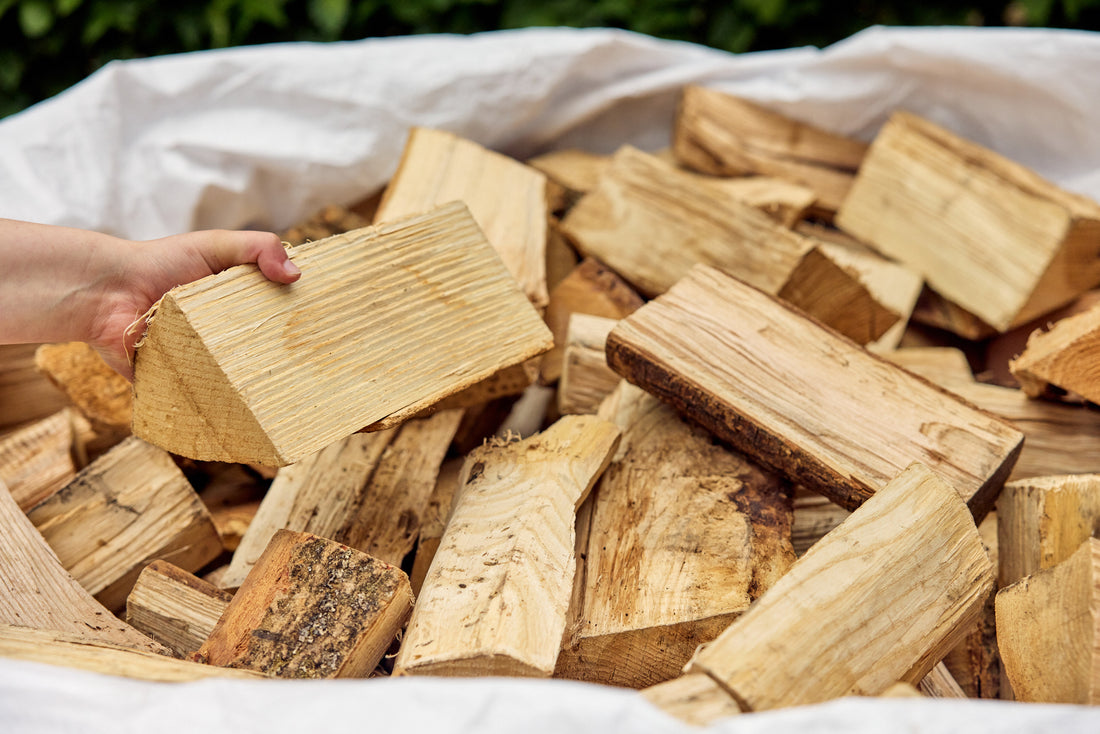
The Firewood Market 2023
Share
What is happening with firewood prices?
It has been an interesting 12 months in which timber prices have seen some significant movements. Softwood which includes various conifers, traditionally used for construction, landscaping, pallets etc have dropped in price by about 15-20% in the last 12 months whereas hardwood thinnings (such as oak, ash and beech) used for firewood has increased by about 30-40%. This has almost totally reversed the norm’ whereby hardwood firewood grade timber would always be cheaper than conifers. I am referring in this instance to raw material being bought by mills and processors.
Has the demand increased for firewood?
Demand for firewood was very strong through last winter and most producers were completely out of raw material stock by January and so pretty much hand to mouth through the spring which led to lead times on firewood deliveries. Prices in some cases shot up even further with some producers paying a further 20-30% in order to secure supplies. In March/April we experienced something we had never had before with very little timber anywhere as the wet spring meant very little felling and extraction could take place. This led to a huge shortage in firewood raw material and an element of surprise and panic across the industry at a time when prices tend to drop back during the summer as supply increases. Fortunately, the market has now settled and prices look to remain at around 20-30% higher than 12 months ago.

What are the factors affecting firewood prices?
This is an interesting question and it seems, talking to many forestry management companies and mills, the timber market is highly complex and very difficult to forecast as there are just so many variables. As with so many other things, even the war in Ukraine has impacted prices as did Covid. Energy prices have a significant affect with a recent increase in wood burning stove sales, but also increased demand for biomass boilers which use softwood chip. The market for construction and landscaping all feed through to affect prices.
What is the affect of ash dieback on the firewood market?
There are still significant amounts of ash being harvested due to ash dieback which in most cases leads to clear felling sites to rid of the disease and replant with other species. There are differing views as to how many years this volume felling will continue for but some say 2-3 years, others say many more.
How long has ash dieback been around?
A recent blog (Dec 22) by Barnaby Wylder who is the Forestry Commission’s Plant Health Forestry Lead in the North West of England reflected on a decade of ash dieback. It was in 2012 that teams at the Forestry Commission discovered that the ash dieback fungus had infected trees in the wider countryside of the UK following a Spring and Summer of intercepting, tracing back and destroying consignments of infected young ash trees which had been imported from countries in mainland Europe which was already suffering from the disease. Whilst the overall story of ash dieback is a real tragedy the most positive news is that within the genes of our ash, a small proportion of our trees are showing a high level of tolerance to the fungus, so as long as these trees are not removed, we shall in future still have healthy ash trees within our British landscape.
Is there going to be enough firewood in the UK?

The overall market for firewood according to the Stove Industry Association (SIA) and Defra is thought to be in the region of 1.75m tonnes per annum and of this, it is thought approx. 200,000 tonnes are imported from Eastern Europe. As of March 2022, according to the Forest Research statistics, the area of woodland in the UK is estimated to be 3.24 million hectares and around 14,000 hectares of new woodland were created in the UK in 20/21. 11.2 million green tonnes (fresh timber) of softwood and hardwood timber were delivered to primary wood processors in 2021 which represents a 4% increase on the previous year. Firewood grade timber comes from woodland thinnings and there is no reason this should slow down for the time being. Looking at the statistics the forecast for hardwood availability over the next 40 years is not set to change significantly so it would appear on the face of it, supply should not be an issue for the foreseeable future.
What is happening with imported firewood?
The affect of the war in Ukraine has had a significant impact on imports. Firstly, the overall increase in energy prices has led to an increase in demand for wood burning stoves across Europe and also the move by people wanting to be less reliant on oil and gas to heat their homes – fuel security is becoming an ever-important consideration. A lot of firewood that is imported from Eastern Europe originates from Russia and so has been restricted in movements. Higher fuel prices have also led to higher transport costs. As a consequence, imported firewood prices rose sharply in 2022 and were higher than UK produced firewood. Prices are dropping back slightly, as they often do in the summer months, but predicting prices for the coming winter is difficult, but many are suggesting they will rise again as demand increases.
Will firewood prices go up this winter?
That’s the big question but one thing we can all be confident of is that the firewood market in terms of supplies to home users does not operate like heating oil which seems to rise and fall, sharply in some cases, depending on demand. You will have noticed that when supplies were tight earlier this year, many suppliers, including ourselves had a lead time for delivery, but prices did not shoot up as a consequence.
Electricity prices have fallen, packaging costs have stabilized, but whilst inflation is still not falling dramatically, it is thought the only factor that may cause firewood prices to go up this winter will be a shortage of the timber we buy as happened in March/April this year. Let’s hope this is not the case.
When is the best time to buy firewood for my wood burner?

Well, this is clearly very simple, the summer months are the best time to buy when there are normally discounts available from suppliers. Make sure you get well stocked up and buy sufficient for the whole winter if you possibly can. If you don’t have the space, consider buying a log store. If you don’t have space, make sure you plan well ahead and when stocks get low in say November, get your order in early and keep stock levels high in case we get a cold winter. As a guide, using a 5kw wood burning stove from Oct to April, evenings and weekends, you are likely to need 3-4m3 loose fill.
Is there going to be enough firewood this winter?
Talking to other suppliers, I think the general consensus is that we hope so, but in terms of hardwood firewood, it is going to be very tight and if we get a cold winter demand will be very strong. Bear in mind that stove sales (source: Stove Industry Association – SIA) in 2022 were at 200,000 (+ 41%) against 142,000 in 2021. The SIA is thought to represent 80% of the UK stove industry so overall sales in 2022 are likely to be in the region of 250,000 wood burning stoves.
N. Snell, 14th July 2023
